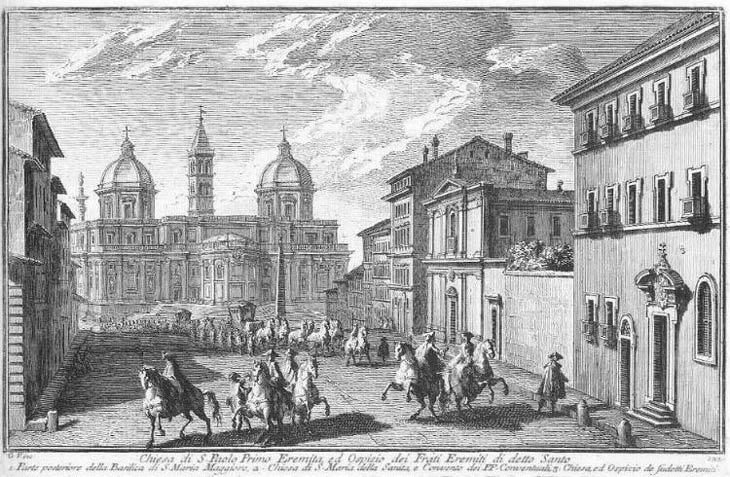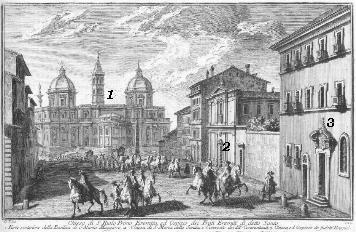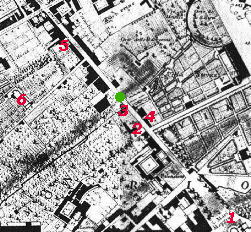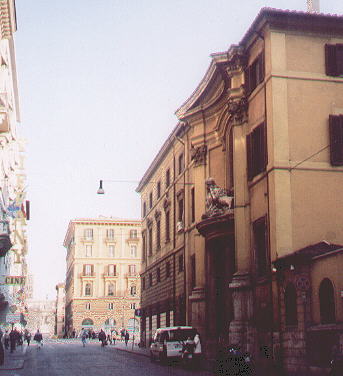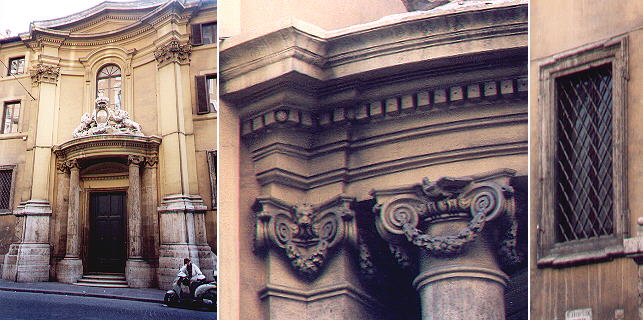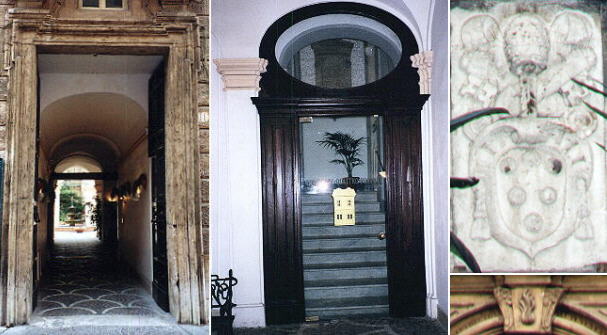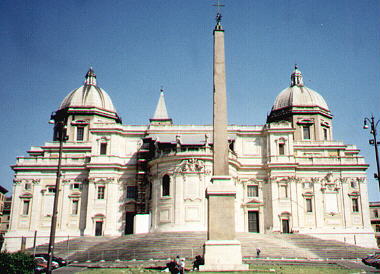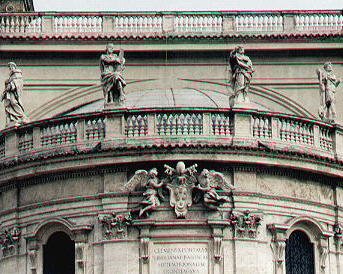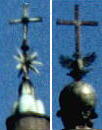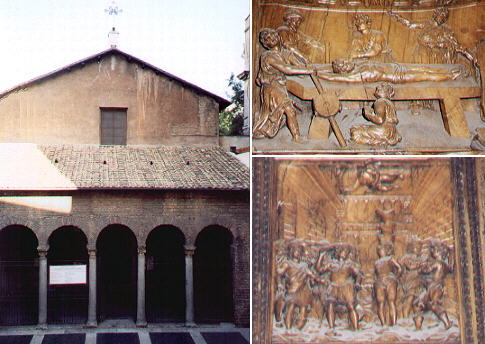  Ospizio dei Frati Eremiti (Book 7) (Map A3) (Day 2) (View B8) (Rione Monti) In this page:
The subject of the plate is the tribune of S.
Maria Maggiore. It is one of the three plates devoted by Vasi to this
Basilica. The view is taken from the street which links S. Maria Maggiore
to Trinità
dei Monti. The street starts on the Esquilino goes down and then up
to the Viminale and from there to the Quirinale (le Quattro Fontane), down
to Piazza Barberini
and finally reaches Trinità dei Monti on the Pincio. The street
was called Strada Felice (Happy Street!) after the name of Sixtus V (Felice
Peretti). The view is taken from the green dot in the small 1748 map here below.
In the description below the plate Vasi made reference to: 1) Tribuna di S. Maria Maggiore;
2) S. Maria della Sanità; 3) S. Paolo Primo Eremita. The small map shows also 4) S. Norberto; 5) S. Dionigi Areopagita; 6) S. Vitale.
The area was largely modified in the late XIXth century when a large building (Palazzo del Viminale, the Italian Home Office) was erected along Strada Felice. S. Maria Maggiore is not as close as shown in the plate, so the actual view has very little resemblance to it.
The church was dedicated to an oriental saint who was thought to be the first hermit (primo eremita). It was modified in 1767-75 by Clemente Orlandi and this explains why it is so different from what we see in the plate. In the late XIXth century it was deconsecrated and a coat of arms of the Italian Royal Family (Savoia) was put above the entrance. The monastery was almost totally pulled down. A few details indicate the previous use of the building: the lion and the raven are associated with St. Paul's life (a raven brought him bread, his grave was dug by lions); the window has a frame which is typical of XVIIIth century buildings.
There were three other monasteries with a church in the same street (S. Maria della Sanità, S. Norberto, S. Dionigi Areopagita). They are all lost although some elements of them can be traced in the current buildings.
The obelisk was erected here by Sistus V (it was at the entrance of Mausoleo di Augusto together with the obelisk which is now in Piazza del Quirinale) and it
is topped by his mountains
with the star (to see all the obelisks of Rome click here). Sistus V built also the chapel on the left (Cappella Sistina), while the twin
chapel on the right was built a few years later by Paulus V (Cappella Paolina). They both show at the top
the heraldic symbols of the popes.
The Tribune was completed under Clemens X by Carlo Rainaldi. Vasi shows a lateral view of S. Maria Maggiore in plate 157.
In the XVIIIth century a narrow lane off Strada Felice led to the old church of S. Vitale, rebuilt in 1475 by Sixtus IV.
The very simple façade leads to a very interesting interior which was fully painted at the
beginning of the XVIIth century with dramatic scenes of sufferings and deaths of martyrs.
The finely carved doors give the visitor an anticipation of what he is going to see.
Next plate in Book 7: Chiesa di S. Maria delle Grazie
Go
to |
All images © 1999 - 2003 by Roberto Piperno. Write to romapip@quipo.it
